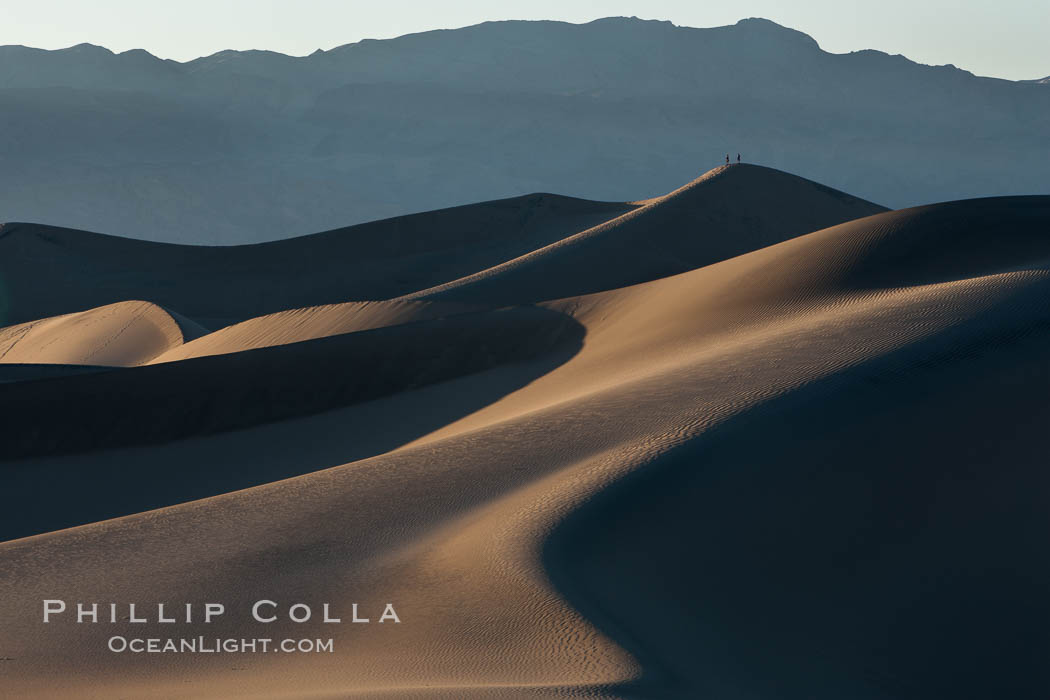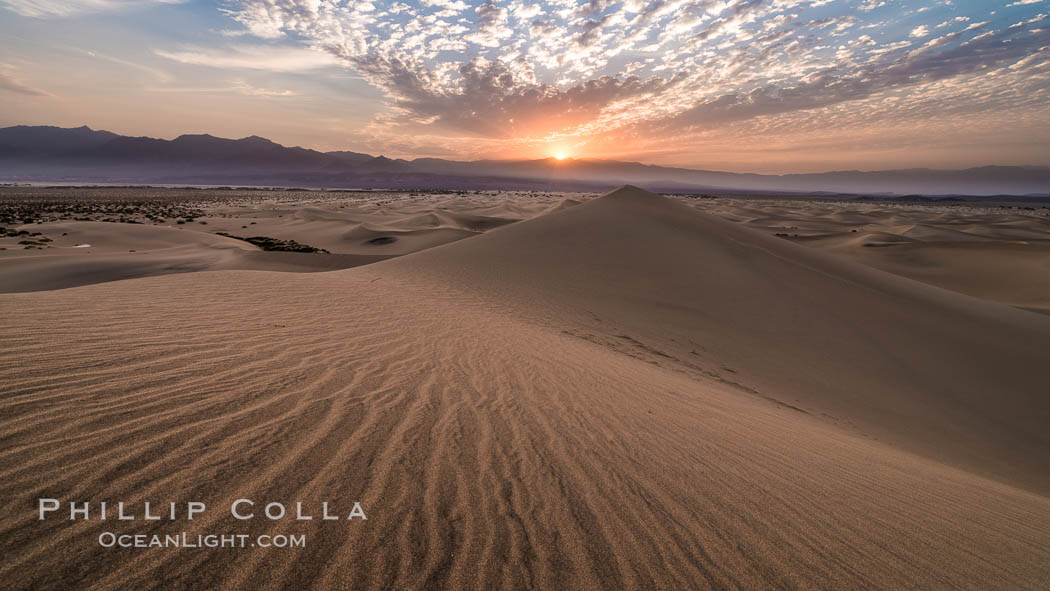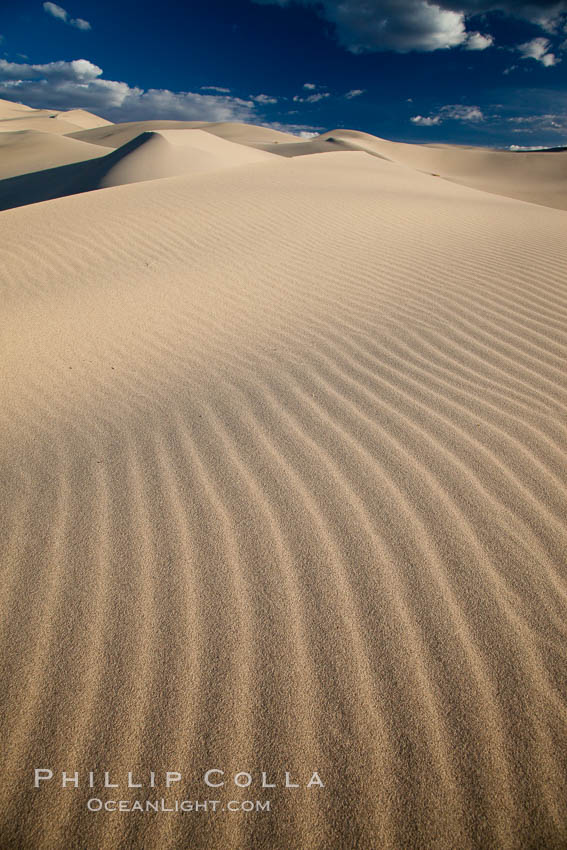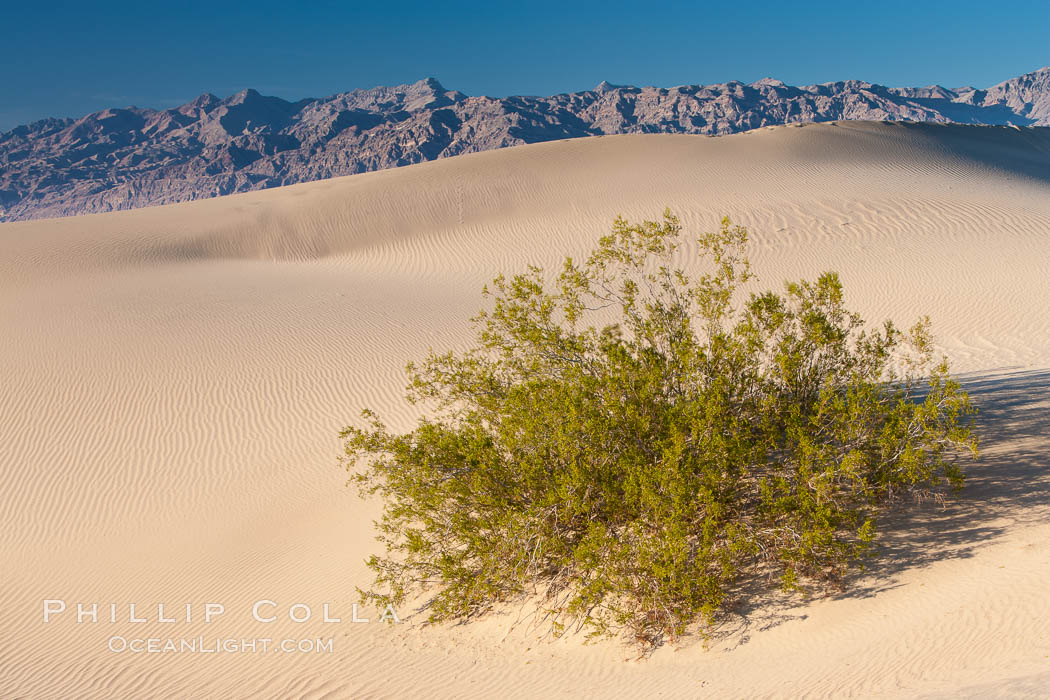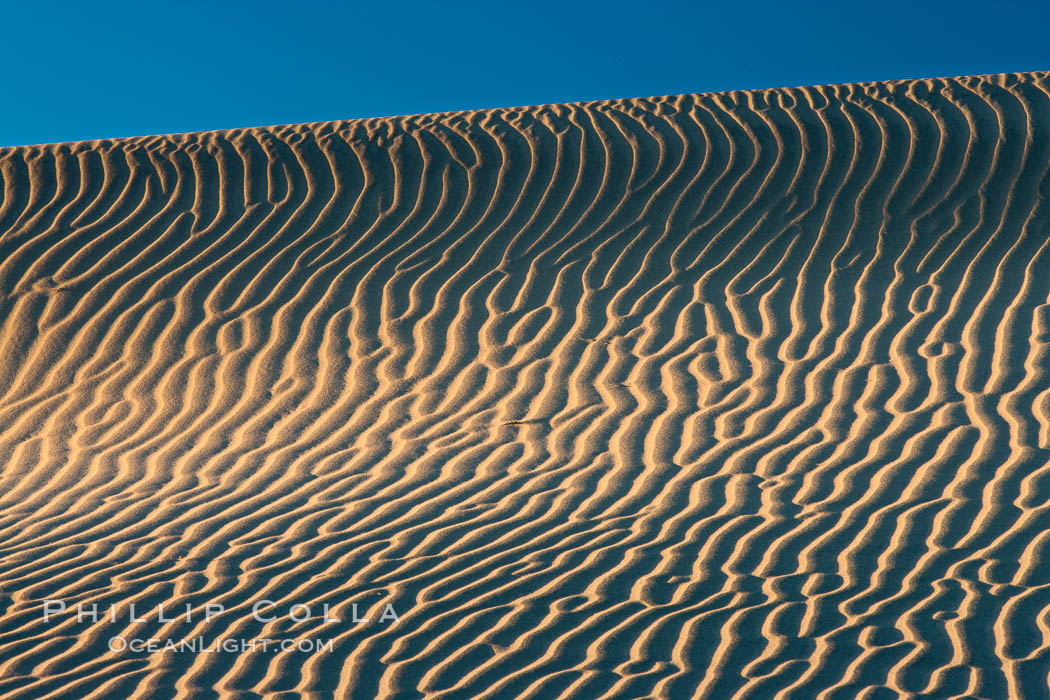Death Valley National Park‘s most accessible sand dunes are just a few miles down the road from Stovepipe Wells, in the center of Death Valley. 14 acres of sand dunes, rising several hundred feet high in places, lie about a quarter mile from the road. While there is no official trail from the roadside parking area to the dunes, you cannot miss them. Just set out on foot from your car in the direction of the dunes that look most interesting and walk for a while. Gradually the brush and vegetation gives way to pure sand and you are there. It is easy to find your own space out here, away from others, among the valleys that lie between the dunes. Sunrise and sunset are the times to walk among the dunes, it gets too hot during midday. Night finds noctural animals roaming the dunes, such as the kangaroo rat and sidewinder. The morning visitor will see cool animal tracks on the dunes, tracks that gradually disappear as the sands shift in the days breezes. If I took my kids to these dunes I would bring a boogie board or big cardboard boxes to let them slides down the steep sides of the biggest dunes.
Tiny hikers atop Sand Dunes in Death Valley National Park, California. Near Stovepipe Wells lies a region of sand dunes, some of them hundreds of feet tall.
Image ID: 15577
Location: Stovepipe Wells, Death Valley National Park, California, USA
Mesquite Dunes sunrise, dawn, clouds and morning sky, sand dunes.
Image ID: 28689
Location: Stovepipe Wells, Death Valley National Park, California, USA
Eureka Dunes. The Eureka Valley Sand Dunes are California’s tallest sand dunes, and one of the tallest in the United States. Rising 680′ above the floor of the Eureka Valley, the Eureka sand dunes are home to several endangered species, as well as “singing sand” that makes strange sounds when it shifts. Located in the remote northern portion of Death Valley National Park, the Eureka Dunes see very few visitors.
Image ID: 25250
Location: Eureka Dunes, Death Valley National Park, California, USA
Sand Dunes, California. Near Stovepipe Wells lies a region of sand dunes, some of them hundreds of feet tall.
Image ID: 15576
Location: Stovepipe Wells, Death Valley National Park, California, USA
Ripples in sand dunes at sunset, California. Winds reshape the dunes each day. Early morning walks among the dunes can yield a look at sidewinder and kangaroo rats tracks the nocturnal desert animals leave behind.
Image ID: 15607
Location: Stovepipe Wells, Death Valley National Park, California, USA
